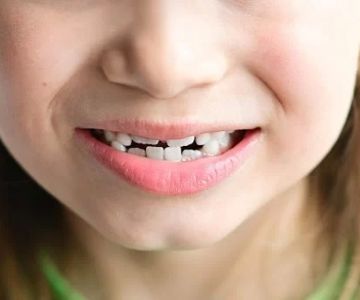
- 1 - why-tooth-pain-happens-and-when-you-need-relief
- 2 - saltwater-rinse-the-golden-oldie
- 3 - cold-compress-when-swelling-is-the-enemy
- 4 - clove-oil-natures-strongest-dental-soother
- 5 - garlic-a-kitchen-remedy-with-scientific-backing
- 6 - when-to-ditch-home-remedies-and-call-a-dentist
1. Why Tooth Pain Happens and When You Need Relief
Tooth pain can be a stabbing shock or a dull, throbbing ache that ruins your entire day—or night. It may be triggered by cavities, exposed nerves, infection, cracked teeth, or gum disease. Most Americans will experience tooth pain at least once in their lifetime, and while the best long-term solution is a visit to the dentist, many turn to home remedies for tooth pain as a quick fix or temporary relief.
In a recent Reddit post, a single mother shared how she eased her unbearable nighttime toothache using kitchen supplies, allowing her to sleep before getting to the clinic the next day. Her story isn’t unique—home remedies often serve as the first line of defense against dental discomfort. But not all methods work equally well.
2. Saltwater Rinse: The Golden Oldie
2.1 Why It Works
Salt has natural antibacterial and anti-inflammatory properties. A warm saltwater rinse is perhaps the most accessible and effective first step. It loosens debris, soothes inflammation, and draws out infections from gum pockets or around the tooth. It’s especially effective after meals when particles stuck in teeth can worsen pain.
2.2 How to Use It
Mix half a teaspoon of salt in a cup of warm water. Swish for 30 seconds, then spit it out. Repeat every few hours as needed. It's safe for kids and adults, and it’s a great pre-treatment before applying any other remedies.
3. Cold Compress: When Swelling Is the Enemy
3.1 The Power of Cold
If swelling accompanies the pain—think abscesses or trauma—a cold compress can numb the area and reduce inflammation. It works by slowing down blood flow, which helps numb pain signals and reduce facial puffiness.
3.2 Practical Application
Wrap ice or a frozen bag of vegetables in a cloth and apply to the affected side of the face for 15 minutes. Repeat every hour. Avoid applying ice directly to skin to prevent frostbite. This method is particularly useful after injuries or in cases of facial swelling before dental treatment.
4. Clove Oil: Nature’s Strongest Dental Soother
4.1 Why It’s Trusted by Dentists
Clove oil contains eugenol, a compound with strong analgesic and antiseptic properties. Dentists have used it for decades in temporary fillings and sedative pastes. When applied directly to a painful tooth, it numbs nerves and fights infection.
4.2 Safe Usage Tips
Soak a small cotton ball in clove oil and place it gently against the painful area. Do not chew or swallow the cotton. For a diluted version, mix clove oil with a few drops of a neutral carrier oil like olive or coconut. Avoid using too much—overuse can cause irritation.
5. Garlic: A Kitchen Remedy with Scientific Backing
5.1 Allicin: The Secret Weapon
Garlic isn’t just for flavor—it contains allicin, a compound known for its antimicrobial power. When crushed, garlic releases this active agent, which can help control bacteria responsible for tooth infections and decay.
5.2 How to Use Garlic for Pain Relief
Crush a garlic clove to activate allicin, then apply the paste to the affected area for a few minutes. The taste is strong and might sting a bit, but many swear by its effectiveness. You can also chew a raw clove near the painful tooth if you’re brave enough.
6. When to Ditch Home Remedies and Call a Dentist
6.1 Warning Signs to Watch For
While home remedies for tooth pain can offer temporary relief, they’re no substitute for professional dental care. If your pain lasts more than two days, is accompanied by fever, swelling that won’t go down, or difficulty swallowing or breathing—seek immediate care.
6.2 Professional Care Is Prevention
At Dentistry Toothtruth, we encourage patients to view home remedies as short-term tools. The root causes—be it decay, infection, or injury—require expert intervention. A root canal, cleaning, or filling can offer permanent relief and prevent complications.
6.3 Combining Home Remedies with Expert Advice
In many cases, a mix of smart home care and prompt dental visits leads to the best outcomes. Patients who manage initial pain well and follow up with a professional often recover faster and face fewer long-term issues.







 Lake County Family Dental Care4.0 (449 review)
Lake County Family Dental Care4.0 (449 review) Henry J. Austin Health Center at Ewing Street3.0 (33 review)
Henry J. Austin Health Center at Ewing Street3.0 (33 review) South Mississippi Smiles - Gulfport4.0 (454 review)
South Mississippi Smiles - Gulfport4.0 (454 review) Jamie Elizabeth Sands, DDS4.0 (67 review)
Jamie Elizabeth Sands, DDS4.0 (67 review) Sandra L. Vargas, DMD3.0 (8 review)
Sandra L. Vargas, DMD3.0 (8 review) Grady Dental Care5.0 (281 review)
Grady Dental Care5.0 (281 review) The Importance of Oral Health Education During Pregnancy for a Healthy Pregnancy
The Importance of Oral Health Education During Pregnancy for a Healthy Pregnancy Best Tips for Brushing Your Teeth Properly for Healthy Gums: Essential Techniques for Oral Health
Best Tips for Brushing Your Teeth Properly for Healthy Gums: Essential Techniques for Oral Health Why Skipping Dental Checkups Can Lead to Bigger Oral Health Problems
Why Skipping Dental Checkups Can Lead to Bigger Oral Health Problems Advantages of Porcelain Dental Restorations
Advantages of Porcelain Dental Restorations How Can Diabetes Cause Tooth and Gum Problems? Preventing and Managing Oral Health Issues
How Can Diabetes Cause Tooth and Gum Problems? Preventing and Managing Oral Health Issues Healthy Habits for Promoting Good Oral Health and Hygiene: Tips for a Healthy Smile
Healthy Habits for Promoting Good Oral Health and Hygiene: Tips for a Healthy Smile